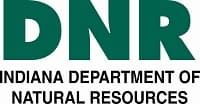Indiana DNR Proposes Regular 2013 Waterfowl Season Dates

Indiana’s regular-season waterfowl dates, as proposed to the United States Fish and Wildlife Service (USFWS) by the DNR, are listed below.
The dates are not final until approved by the USFWS in mid- to late September. A future announcement will either confirm or amend these dates. Historically, they have been accepted as proposed.
The DNR’s recommended dates for hunting ducks, coots and mergansers are:
- North Zone: Oct. 19 to Dec. 8 and Dec. 21-29
- Central Zone: Oct. 26 to Dec. 8 and Dec. 21 to Jan. 5
- South Zone: Nov. 2-10 and Nov. 30 to Jan. 19
The daily bag limit for ducks in all zones is six, including no more than four mallards (of which no more than two can be hens), three scaup, three wood ducks, two pintails, two redheads, two canvasbacks, one black duck, and one mottled duck. The daily bag limit for coots is 15. The daily bag limit for mergansers, separate from ducks, is five, of which no more than two can be hooded mergansers. The possession limit is three times the daily bag limit.
The USFWS estimates the mallard breeding population at 10.4 million, about the same as last year and 36 percent higher than the long-term average. Estimates of most species were slightly below last year’s record-setting estimates. Total ducks, gadwalls, green- and blue-winged teal, shovelers, and redheads remain near record levels in 2013.
For hunting Canada geese, white-fronted geese, and brant, the proposed dates are:
- North Zone: Oct. 19 to Nov. 10, Nov. 28 to Jan. 5, and Jan. 18-29
- Central Zone: Oct. 26 to Dec. 8, Dec. 21 to Jan. 5, and Jan. 18-31
- South Zone: Nov. 2-12 and Nov. 30 to Jan. 31
The daily bag limit this year for Canada geese during the regular season is three. The daily bag limit for white-fronted geese is two. The possession limit is three times the daily bag limit.
The proposed late season for hunting Canada geese is Feb. 1–15. The counties open during the late season are: Adams, Allen, Boone, Clay, DeKalb, Elkhart, Greene, Hamilton, Hancock, Hendricks, Huntington, Johnson, Kosciusko, LaPorte, LaGrange, Madison, Marion, Marshall, Morgan, Noble, Parke, St. Joseph, Shelby, Steuben, Starke, Sullivan, Vermillion, Vigo, Wells and Whitley.
A permit is no longer required to participate in this late season, and geese harvested during this season no longer need to be taken to a check station. The daily bag limit during this season is five Canada geese, with a possession limit of 15.
The proposed statewide season for light geese is Oct. 19 to Jan. 31. The daily bag limit for light geese is 20 (snow and/or Ross’ geese in aggregate). There is no possession limit on light geese.
The proposed light goose conservation order is Feb. 1 to March 31, statewide, except for those counties that have a late season on Canada geese. For those counties with a late season on Canada geese, the proposed light goose conservation order season is Feb. 16 to March 31.
The light goose conservation order has no bag or possession limit. A free permit is required. Details will be available later in the winter.
The DNR’s recommended dates for youth waterfowl season are:
- North Zone: Oct. 12-13
- Central Zone: Oct. 19-20
- South Zone: Oct. 26-27
Bag and possession limits are the same as the regular seasons. The youth waterfowl season is open to youths 15 and under, accompanied by an adult.
DNR’s recommended dates for extended falconry season for ducks, coots and mergansers are:
- North Zone: Sept. 27-30 and Feb. 14 to March 10
- Central Zone: Oct. 19-25 and Feb. 17 to March 10
- South Zone: Oct. 26 to Nov. 1 and Feb. 17 to March 10
Migratory bird hunters must register for the Migratory Bird Harvest Information Program (HIP) and receive a HIP number. To register, call 1-866-671-4499 or go to dnr.IN.gov/fishwild/3567.htm. Hunters who are exempt from needing a license to hunt waterfowl or migratory birds must still register for an HIP number. These hunters must register online.
For more information, contact Adam Phelps, DNR Division of Fish & Wildlife, at (812) 334-1137, or aphelps@dnr.IN.gov.

